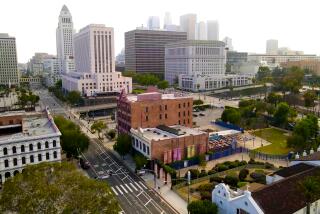Ancient Bones Stir Controversy : Wetlands: Foes of building at Bolsa Chica accuse development firm, archeologist of failing to mention findings of human remains.
HUNTINGTON BEACH — Opponents of developing the Bolsa Chica wetlands charged Monday that the Koll Real Estate Group and its private archeologist withheld information about the discovery of 8,000-year-old human bones at the site.
A Koll official and the archeologist denied the accusation.
The presence of long bone shafts and cranial fragments were disclosed by Judy Myers Suchey, a forensic anthropologist and Cal State Fullerton instructor. She examined the fragments at an excavation site and at the laboratory of Scientific Resource Surveys Inc., a private archeological firm hired by Koll.
In a report, Suchey wrote: “The skeletal remains coming from this site are very old, approximately 8,000 years old as indicated from some current dating procedures . . . the bone comes from a uniform layer, the upper part of the Pleistocene terrace deposit. For this reason, the bone is clearly prehistoric and cannot be confused with modern skeletal material of forensic interest to the Coroner.”
Suchey was hired by the Orange County coroner’s office to investigate the fragments after Nancy Desautels, an archeologist and owner of Scientific Resource, told the coroner that human bones had been found during an excavation.
What has angered environmentalists is that no mention of the bones, their age or possible archeological significance was made to county planners and thus did not appear in the county’s recently released draft of an environmental impact report on the Koll development.
“I think it’s alarming, to say the least, that the EIR released by the county says that no human bones have been reported on the Bolsa Chica Mesa,” said Flossie Horgan, president of the Bolsa Chica Land Trust, the main opponent of the project.
“In fact,” Horgan said, “in the EIR, they gave the right designation for the particular site, but under the column of any human remains, it said, ‘None reported.’ ”
Koll proposes to build 4,286 homes on 400 acres of the site in exchange for the company spending $48 million to restore 1,100 acres of wetlands. Project foes argue that the wetlands should remain undeveloped, especially now that the area may have archeological importance.
In response to Horgan’s criticism, Lucy Dunn, Koll’s senior vice president, said Monday that she had not seen Suchey’s letter, but she denied that the Koll company or Desautels hid information about the bones after they were unearthed in October.
Said Dunn: “The Land Trust group is really making much ado about material that is still under scientific review.”
In addition, Dunn said that publicizing the finding might jeopardize the integrity of the dig by enticing souvenir seekers to the site. Guards have been hired as security at the site, whose location the company did not disclose.
Tom Matthews, director of planning for the county’s Environmental Management Agency, said Monday that he was not aware of the information in Suchey’s report.
“I will look into that and I will ask our technical staff who prepared the environmental studies to address that,” Matthews said. “But (the Land Trust’s) comments should have been made to me.”
Matthews and the county recently were criticized for refusing to hold public hearings on the draft environmental impact report. However, interested parties still have until Feb. 18 to submit written comments about the report.
After the report is revised and completed, Matthews said, the county will hold a series of public hearings on the project in May.
“Apparently we have a group or groups that are questioning the draft’s veracity and we would be happy to address that and answer their questions,” Matthews said.
Desautels, the private archeologist hired by Koll, said she did not inform the county planning agency about the human bone fragments because she had not finished her own analysis and report.
“When you find bone it’s very fragmented, heavily mineralized and really difficult to know what you’re dealing with,” Desautels said. “Now we do have human bone fragments mixed in with animal bone. But due to the nature, it’s very difficult to determine what you have.”
Desautels and David Kice, a human osteologist working with Desautels, have been finding small shells and other deposits dating back 6,000 to 7,000 years at a 30-foot-square site on the wetlands. Up to now, bone fragments have been only from small animals, Desautels said.
According to Patricia Martz, a member of the State Historical Resources Commission and professor of anthropology at Cal State University at Los Angeles, the finding of human skeletal remains is potentially significant.
“In addition to scientific value, they have value to Native Americans,” Martz said. “The value of a prehistoric site increases if they have a cemetery involved. And, the fact that some human remains were found would suggest that perhaps more are scattered around the area.”
More to Read
Sign up for Essential California
The most important California stories and recommendations in your inbox every morning.
You may occasionally receive promotional content from the Los Angeles Times.










